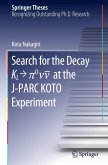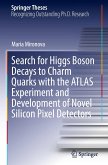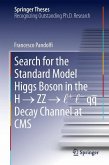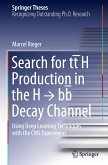This book reports on a new result from the KL pi0nini search at the J-PARC KOTO experiment, which sets an upper limit of 3×10-9 for the branching fraction of the decay at the 90% confidence level, improving the previous best limit by an order of magnitude. To explain the matter-antimatter asymmetry in the universe, still unknown new physics beyond the standard model (SM) that breaks CP symmetry is necessary. The rare decay of a long-lived neutral K meson, KL pi0nini, is a CP-violating decay. It is an excellent probe to search for new physics because new physics can contribute to the decay and change its branching fraction, while the SM is as small as 3×10-11. However, it is extremely difficult to search for because all of the decay products are neutral and two neutrinos are undetectable. The KL pi0nini signal is identifiedby measuring two photons from a pi0 with a calorimeter and confirming the absence of any other detectable particles with hermetic veto counters. The book contributes to the analysis of neutron-induced backgrounds which were the dominant background sources in the search. For the background caused by two consecutive hadronic showers in the calorimeter due to a neutron, the author evaluated the background yield using a data-driven approach. For another background caused by an meson production- decays two photons-by a neutron that hits a veto counter near the calorimeter, the author developed an original analysis technique to reduce it. The book also contributes to the analysis of the normalization modes (KL 3pi0, KL 2pi0, KL 2Gamma) to measure KL yield, the estimation of the signal acceptance based on a simulation, and the evaluation of the trigger efficiency. As a result, significant improvements in the measurement were achieved, and this is an important step in the continuing higher sensitivity search, which can reach new physics with the energy scales up to O(100-1000 TeV).








